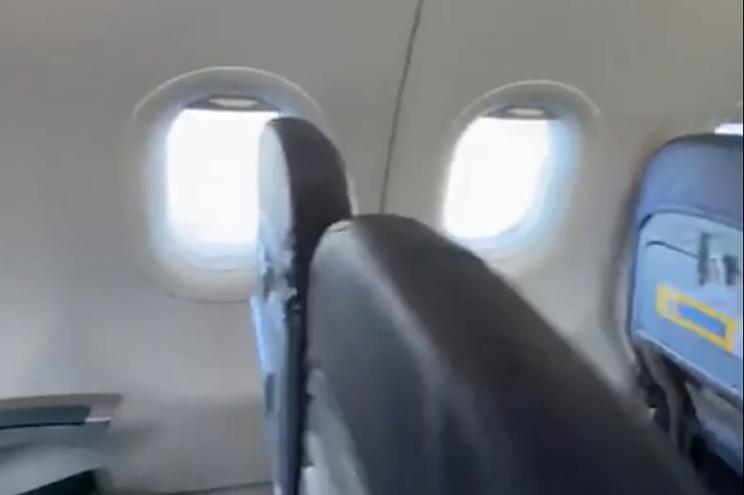Have you ever noticed a tiny hole at the bottom of a plane window?
Well, there’s a “really important” reason for it.
The pinprick hole is located at the bottom center of all the plane windows and like every other inch of a commercial airplane, the “bleed hole,” as it’s called, is a highly engineered and functional design detail.
Quite simply, it’s all about pressure.
Henny Lim, a flight attendant for Philippines-based airline Cebu Pacific, said passengers often ask about the “mysterious” holes and if there’s a hidden reason for them.
“If you’ve ever sat in the window seat on a flight, you’ve probably noticed the tiny hole at the bottom of the window,” she said in a TikTok.
“This is called the ‘bleed hole’. [It] helps to balance the pressure between the cabin and the outside air.
“It also has another purpose which is to release moisture and stop frost/ condensation from blocking your view.”

When an airplane reaches cruising altitude, there’s a significant difference in pressure between the air outside and the air inside the cabin, which is pressurized to mimic the atmosphere at lower altitudes, travel publication AFAR, reported.
Most commercial aircraft window panes have outer, middle and inner panes, all usually made from acrylic.
“The outer pane bears all the stress of cabin pressurisation,” Robbie Gonzalez, a tech writer for Gizmodo wrote in an article on the topic.

The inner pane is designed to hold the cabin pressure in the “extremely rare” event the outer pane is fractured.
“The purpose of the breather hole, which is located near the bottom of the middle pane, becomes clear: it serves as a bleed valve, allowing pressure between the air in the passenger cabin and the air between the outer and middle panes to equilibrate,” Gonzalez explained.
“This tiny little hole ensures that cabin pressure during flight is applied only to the outer pane … thus preserving the middle pane for emergency situations.”
If cabin pressure blew the outer pane out, which is rare, the inside pane is still strong enough to hold pressure, giving pilots time to drop to lower altitudes and decrease the cabin pressure.
“According to the [Boeing] 737 maintenance manual, the middle pane is designed to maintain 1.5 times the normal operating pressure at 70 degrees Fahrenheit,” Gonzales continued.
In other words, it’s best not to touch the bleed hole or cover it such, so it can do its job effectively.








